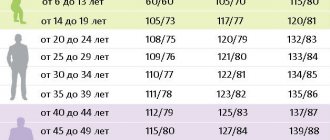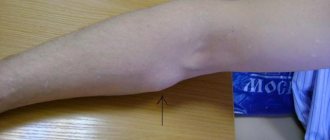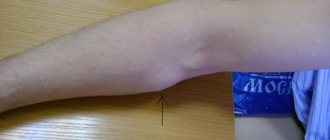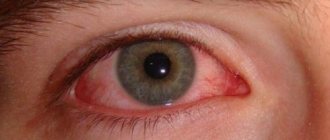An ophthalmologist is a specialist in the field of diagnosis, treatment and prevention of diseases of the visual organs. His competence includes any pathologies, disorders and disorders of the human visual system. Consultation with a doctor is necessary for both children and adults. Regular preventive visits to an ophthalmologist help to avoid the occurrence of eye health problems, and if they exist, to identify them in the early stages, making the chances of successful treatment as high as possible. The particular danger of eye diseases is that in some cases they can cause complete loss of vision, which is why the medical activity of an ophthalmologist (also called an ophthalmologist) is of significant value.
Today, in some medical institutions you can find an ophthalmologist, in others - an ophthalmologist, and given that both doctors treat the eyes, this fact is confusing for patients. When should you see an ophthalmologist, and what does an ophthalmologist do?
What is the name of the doctor who treats eyes?
Eye doctors in our country are traditionally called ophthalmologists. What kind of doctor is this - an ophthalmologist and what are the specifics of his work? In fact, from the point of view of terminology, “ophthalmologist” and “ophthalmologist” are synonyms. The word "oculus" is of Latin origin and means "eye". "Ophthalmos" is also "eye", only in ancient Greek. Thus, there is no difference between the names of professions. Based on the etymology, you can understand what an ophthalmologist means - a doctor who treats eye diseases.
In Western European countries, the term “ophthalmologist” is used. Gradually, Russian clinics are beginning to actively implement it. It would be a misconception to think that an ophthalmologist is a different profession. He does the same thing as an ophthalmologist - he treats the eyes and organs of the visual system. Moreover, any specialist can have a narrower specialization: for example, there are ophthalmological surgeons, pediatric ophthalmologists, etc.
From which specialist can you expect a more effective solution to vision problems?
Is an ophthalmologist a specialist in the same profile as an ophthalmologist, but at a higher level?
Or do these doctors have different functions? Who is the best person to contact if you have vision problems? Such questions often concern people suffering from eye diseases.
In fact, both of these specialists are representatives of the same profession. The only difference between them is that doctors involved in the diagnosis and treatment of diseases of the visual organs were called ophthalmologists until 1981, then the staffing schedule of medical institutions was changed, and today doctors called ophthalmologists are at the forefront of the fight against eye diseases.
By the way, in a sense, an ophthalmologist is indeed a specialist of a higher level than an ophthalmologist, because doctors working in modern ophthalmological clinics equipped with high-tech medical devices are able to solve vision problems much more effectively than their colleagues from the very recent past.
What does an ophthalmologist treat?
Answering the question of what kind of doctor is an ophthalmologist and what he treats, we will list the most common diseases.
1. Glaucoma.
2. Cataract.
3. Refractive errors - myopia, farsightedness, astigmatism.
4. Strabismus.
5. Ptosis.
6. Retinal diseases (detachment, dystrophy).
7. Injuries to the eyes, eyelids, lacrimal glands.
8. Inflammatory eye diseases (conjunctivitis, keratitis, barley, etc.).
9. Color vision disorders.
10. Hemorrhages.
Many vision problems are caused by diseases of other organs. This means that an ophthalmologist also treats pathologies associated with hypertension, atherosclerosis, diabetes, difficult pregnancy or childbirth, and renal failure.
Do I need to visit an ophthalmologist for preventative care?
Even in the absence of alarming symptoms, it is recommended to undergo an annual examination with an ophthalmologist.
This approach makes it possible to verify the normal functioning of the organ system and identify pathologies at the primary stage of their development.
Preventive examinations are indicated for adults and children. The child's visual system undergoes a period of formation. If you diagnose a failure at the initial stage, there is a high probability of solving the problem without consequences.
In this case, it is possible to cope with strabismus, impaired binocular vision, and myopia.
In adults, the visual system also undergoes some changes that can cause decreased vision, macular degeneration, and pathologies of the lens and retina.
Preventive examinations by a specialist make it possible to timely identify and competently plan the treatment of pathologies that “result” in age-related vision loss.
Prevention of eye diseases during pregnancy . Hormonal imbalance in the female body can lead to decreased visual acuity and exacerbation of chronic pathologies.
The ophthalmologist decides whether the expectant mother can give birth to a child on her own or will have to resort to a caesarean section. Some eye pathologies can lead to retinal detachment during natural childbirth.
Preventive examinations by an eye doctor are recommended for pregnant women in every trimester. If progressive myopia, retinal detachment or other diseases that can threaten women's health are detected, the pregnant woman may require additional medical examinations.
When should you contact an ophthalmologist?
An ophthalmologist is an eye doctor. Therefore, you need to make an appointment with him if you experience any eye problems. It is better not to delay a visit to the doctor: some diseases that seem not serious, such as conjunctivitis, can have serious complications: inflammation of the cornea, formation of a cataract, decreased vision, etc.
Warning signs for which it is advisable to see an ophthalmologist are:
- pain, burning, severe itching in the eyes;
- redness of the eyelids or eyeball;
- swelling of the eyelids in the absence of objective reasons;
- fog before the eyes;
- double vision;
- painful reaction to light;
- change in the field of view (narrowing, loss of some areas);
- distortion of objects;
- decreased visual acuity;
- increased lacrimation;
- feeling that there is a foreign body in the eye;
- pus discharge from the eyes;
- any injuries.
There are also people who are at risk for developing eye diseases and pathologies. Regular visits to an ophthalmologist (or, in other words, an ophthalmologist) are prescribed for people suffering from diabetes and pregnant women. In addition, diseases of the kidneys, liver, endocrine, and cardiovascular systems can cause serious eye complications. It is recommended that people with a hereditary predisposition to the diseases listed above have their eye condition checked at least once a year.
Many regenerative processes are associated with age-related changes. People over 45 years of age need to be careful about their eyes and get doctors' recommendations on how to preserve their vision (gymnastics, vitamins, moisturizing drops, etc.). Knowing what an ophthalmologist is treating is also important for patients who are undergoing a long course of hormonal therapy. An excess of hormones can lead to exophthalmos (protrusion of the eyes) or diabetic retinopathy (the blood vessels of the fundus grow abnormally, the retina is damaged, and vision decreases).
How do ophthalmologists at the Excimer Clinic conduct vision diagnostics?
High-precision diagnostic instruments available in the arsenal of our clinic’s specialists allow us to assess the state of the visual system literally with micron accuracy.
Instead of outdated tables for checking visual acuity, Excimer uses projection devices; simple glasses with diopters are replaced by electronic phoropters. Our ophthalmologists scan the visual system, recording its slightest features and distortions using a unique device, a wavefront analyzer or an aberrometer. Tomographs, tonographs, autorefractometers, echo scans, devices designed for ophthalmological examination of children from the first days of life, and much more - the equipment used in the Excimer clinic makes it possible not only to determine visual acuity as accurately as possible, but also to identify various even the smallest and hidden pathologies of the visual system.
Don't delay visiting an ophthalmologist! Remember, accurate diagnosis and timely treatment of eye diseases will help you preserve your vision!
What is an appointment with an ophthalmologist at the Excimer Clinic like?
Sign up for an excimer clinic and learn more about your health!
You can call by phone
Or click the button and fill out the application form and receive a 5% discount on a full vision diagnostic
Make an appointment
Our address: Moscow, st. Marksistskaya, 3, building 1
"Excimer" on the map of the "Excimer" Clinic in other cities
Diagnostic methods
Now that we have figured out what kind of doctor an ophthalmologist is, let's look at what diagnostic methods he uses. The first step is a visual examination, but then the doctor can use a whole arsenal of modern diagnostic equipment to select the optimal treatment.
An ophthalmologist diagnoses eye diseases using the following methods:
- tonometry - measurement of intraocular pressure;
- refractometry - a study of refraction to identify myopia, farsightedness, astigmatism;
- visometry - a study of visual acuity familiar to everyone from childhood using tables with letters/images;
- color test to determine the ability to distinguish shades;
- ultrasound and optical biometry - study of the physical characteristics of the eye, the condition of the cornea and lens;
- ophthalmoscopy - examination of the eye using an ophthalmoscope, which allows you to examine the internal structures of the eye;
- biomicroscopy - study of the structure of the eye using a slit lamp;
- angiography - examination of the condition of the blood vessels of the eye by introducing a special dye;
- tonography - measurement of the rate of outflow of aqueous humor, necessary for glaucoma.
Features of examination of children
An ophthalmologist is as important a specialist for a child as a pediatrician. High visual load at school, falls and injuries, puberty - all this can cause visual impairment in childhood.
A standard examination of a child by an ophthalmologist consists of:
- fundus ophthalmoscopy;
- visual acuity tests;
- assessment of eyeball mobility;
- definition of binocular vision - the ability to see clearly with both eyes at the same time.
MRI, angiography and other research methods may be prescribed as additional diagnostic methods.
Visiting a specialist with a child does not require any specific preparation. However, during the consultation it is important that he does not cry: tears complicate the diagnosis. In addition, the child must behave calmly and follow the specialist’s recommendations. Therefore, when you go with your little patient to the doctor, you can take his favorite toy with you. It will help your baby cope with anxiety and feel more comfortable.
What does an ophthalmologist do and what treatment methods does he use?
The choice of treatment method depends on the specific disease. Typically, a general ophthalmologist will prescribe local or general treatment, eye exercises and physical therapy. But surgical intervention is carried out by ophthalmologist-surgeons - specialists who own modern minimally invasive equipment for performing operations on the eyeball
| Type of treatment | When is it appointed? | Methods |
| Local | Prescribed for diseases of the anterior part of the eyeball, as well as inflammation of the eyelids and lacrimal glands | Instillation of eye drops, application of ointments, lubrication of the ciliary edge of the eyelids, periocular injections. |
| General | It is used for severe eye diseases, especially those caused by infections and viruses. | Taking orally, intramuscularly or intravenously anti-inflammatory, antibacterial, antihistamine, strengthening drugs. |
| Surgical | Surgeries are prescribed in cases where conservative methods do not work. Also, surgical intervention allows you to permanently get rid of myopia, farsightedness or astigmatism (however, the procedure has serious contraindications). | Laser vision correction, laser treatment of glaucoma, trabeculectomy, lens replacement, scleroplasty, corneal transplant, etc. |
| Physiotherapy | Effective for improving blood circulation, reducing swelling, and activating biochemically active substances. As a rule, it is an auxiliary method and is used only in conjunction with general therapy | Electrotherapy, phototherapy, mechanical therapy and barotherapy. |
| Gymnastics for the eyes | Necessary to relieve tension and normalize blood flow to the eyeballs. Excellent for coping with dry eye syndrome. It can be effective in preventing vision loss. | Exercises according to U.G. Beitu, M.D. Corbett, Professor Zhdanov and many other types of gymnastics. |
Causes of eye diseases
In the modern world, the role of digital and computer technologies in our lives cannot be underestimated. Unfortunately, not everything is as good as it seems. Computers, tablets and other gadgets can sharply reduce vision, which negatively affects the usual course of life and well-being. An ophthalmologist will help make the correct diagnosis and prescribe appropriate treatment.
Circumstances of deterioration of eye health:
- unfavorable environmental conditions can also lead to unpleasant symptoms of visual impairment;
- poor metabolism in the body only contributes to eye diseases;
- bad habits reduce visual acuity;
- lack of vitamins and minerals;
- stress;
- head injuries;
- various diseases, both infectious and non-infectious.
Main eye diseases:
- myopia affects people of all ages;
- astigmatism - with this disease, the clarity of the objects in question is disrupted;
- farsightedness usually appears with age;
- Chalazion is a neoplasm that appears under the eyelid, mainly under the upper one. Inflammation can also spread to the tissues surrounding the eye.
- dry eye - insufficient hydration of the cornea and conjunctiva, expressed in a feeling of burning and stinging in the eyes;
- stye is caused by infection and requires complex treatment;
- cataract - clouding of the lens is almost impossible to prevent, you can only slow it down;
- macular degeneration leads to blindness due to damage to the retina;
- conjunctivitis - damage to the mucous membrane, possibly redness and purulent discharge;
- color blindness is a violation of human color perception, a congenital defect;
- scleritis - inflammation of the fibrinous membrane of the eyeball, caused by autoimmune pathologies;
- blepharitis - inflammation of the eyelid, manifests itself in the form of redness, peeling of the eyelids and sticking of eyelashes;
- retinal dystrophy is a whole group of diseases characterized by impaired light perception.
Vision testing in children
You can explain to your children which doctor treats eyes and what another name an ophthalmologist is by making an appointment with the doctor. Vision testing in children should be carried out regularly: at a younger age, it will make sure that the child does not have congenital pathologies and the development of the visual organs is in accordance with the norm, and at an older age, it will prevent the development of myopia. The most vulnerable age for myopathy is 8-14 years, when eye strain increases sharply, and children are not yet accustomed to maintaining workplace hygiene.
Children with poor heredity should definitely visit an ophthalmologist.
In childhood, it is easier to identify and treat many disorders - astigmatism, strabismus, farsightedness, myopia, etc. Timely prescription of correction will avoid the development of other diseases - strabismus and amblyopia. It is advisable for children to see an ophthalmologist at least once a year. Ophthalmologists of the Lensmaster chain of salons specialize in refractive error and eye accommodation, so they can choose suitable glasses or contact lenses even for people with serious impairments. There are children's specialists who are ready to conduct a full vision examination of children from 7 years of age. You can make an appointment in Moscow, St. Petersburg, Rostov-on-Don and other cities of Russia through the online form.
General rules for preparing for an appointment with an ophthalmologist
First of all, you need to systematize all your symptoms and complaints in order to clearly and thoroughly describe them to the doctor. It makes sense to take the results of tests and examinations that were done no earlier than half a year before the scheduled examination with an ophthalmologist. Women should not wear cosmetics when going to the doctor. For those who wear contacts, they should be removed at least an hour before your appointment, and in general, if possible, it is best to temporarily switch to glasses about a week before your doctor's appointment.
For children
According to WHO, about 20% of preschool children suffer from eye diseases. Every 4 children have visual impairment. Children suffering from eye diseases and visual impairment cannot develop normally physically and this significantly worsens the quality of life.
It is very important to remember that the health of the child should be in the first place for the parents. Due to the growth of modern digital technologies, the health of a child's eyes is at risk.
A visit to a specialist is now simply a big necessity, which can prevent a number of many unpleasant diseases and help maintain the baby’s sharp vision for a long time.
Selection of simple and complex glasses, contact lenses
Our ophthalmologists also select glasses and contact lenses.
Simple glasses are selected for common pathologies, such as myopia and farsightedness. The selection of complex glasses is carried out for more serious visual impairments. To prescribe them, the doctor first needs to conduct a series of studies: for example, for astigmatic glasses, eye biomicroscopy and ophthalmometry are done. Based on the data obtained, the doctor selects the necessary lenses and checks their tolerability by the patient.
When prescribing contact lenses, the doctor will explain in detail how to put them on and remove them, how to maintain hygiene when wearing lenses and how to care for them. This will allow you to avoid discomfort when using contact lenses.
Child at an ophthalmologist's appointment
An interview with pediatric ophthalmologist Natalya Georgievna Zakharova, about what to do if your child has already been given a prescription for an optical salon, and about how to preserve vision.
- Why does a one-year-old child need an ophthalmologist and how to undergo examinations correctly.
- We are all born farsighted, what should we do about it?
- Why are glasses needed?
- Myopia, true and false.
- The terrible beast is astigmatism.
- How to choose glasses?
- Vitamins, gymnastics and...and shooting!
In the foreseeable future, 90% of the world's population will not only become bespectacled people, but also ophthalmologist patients - due to the excessive strain on the eyes and the dominance of gadgets.
“We have already lost the battle against myopia”—this is the leitmotif used today by most scientific conferences on pediatric ophthalmology. Next in line are ailments such as farsightedness and astigmatism; statistics on them are also steadily growing.
Why does a one-year-old child need an ophthalmologist and how are examinations performed correctly?
I’ll probably start by reminding parents once again: you shouldn’t neglect visits to the ophthalmologist, even if it seems to you that everything is fine. You can often hear from mothers of one-year-old babies: “He can see perfectly well, there he is, picking up crumbs from the floor, pointing his finger at the plane in the sky - what problems could he have?” Dangerous misconception! It is medical examinations of the baby every month, six months, a year and then annually that allow us to identify the problem at an early stage and successfully correct it. After all, a small person cannot yet say that he is experiencing difficulties and sees blurredly. He simply doesn’t know how normal things should be, he can’t complain to his parents! The second important point: an examination by an ophthalmologist must be carried out under cycloplegia - when drops are instilled to dilate the pupil. This is the only way to accurately determine whether there is cause for alarm. The formation of the eyeball occurs from birth until the age of 7, but is completely completed only by the age of 14. Surgical interventions to correct vision are best done after 18 years of age, and before that, use conservative methods. It is important to understand that at any point along the way, breakdowns and refractive errors can occur, when the display of an object does not occur as nature intended. The refractive system of the eye is the cornea, lens, aqueous humor and vitreous humor. Normally, when passing through it, all rays should converge on the retina at one point. If this happens behind the retina, we talk about farsightedness; in front of the retina, we talk about myopia. Vision problems also arise with diagnoses such as astigmatism and amblyopia (“lazy eye”). Quite often, when making these diagnoses, correction with glasses is required.
We are all born farsighted, what should we do about it?
Farsightedness is most often diagnosed in children. We are all born with physiological farsightedness; in a newborn it is approximately +4 diopters. Therefore, the child does not distinguish objects well at close range, but sees well at a distance - this must be taken into account when showing him pictures and communicating with him in the first months of life.
Then the child grows, per year his norm shifts to +2-2.5, maximum +3 diopters. If we see such numbers using instruments at the 12-month medical examination (let me remind you, only with special drops!) there is no reason to panic. But it happens that in some children, farsightedness becomes higher than normal, and then mandatory correctional support is necessary. This is where the hardest part begins: the struggle with mothers to put on glasses. I hear arguments: it’s inconvenient, it’s early, maybe it will go away on its own? None of them, alas, stand up to serious criticism.
“What, do you want the child’s cerebral cortex to be disrupted?” or “Why do you need glasses?”
First of all, because it will help the child develop normally. He sees everything blurry, and the part of the cerebral cortex that is responsible for visual perception will not function fully: it will constantly receive erased, unclear, incorrect information. Secondly, if we do not correct farsightedness in time, the child may develop strabismus, but it is much more difficult to treat, and it sometimes develops rapidly. Especially often, strabismus debuts at the age of 2-4 years, when active stress on the eyes begins - games with puzzles, cubes, books and cartoons.
What can be the result of wearing glasses?
Those mothers who immediately agree to glasses when diagnosed with farsightedness, as a rule, notice a positive result quite quickly. I ask you to come back in 3 months to evaluate how the baby wears glasses, whether they are comfortable for him, and whether the lenses are chosen correctly. And most often I hear that even during this period the child has changed a lot - he has become less irritable, his interest in looking at books, drawing, and modeling has increased. It becomes clearly clear that the child suffered from the fact that he always saw everything dimly. One mother even complained that her son, when she tried to sit him down at the table to draw, jumped up and ran away. And with glasses, I quickly made up for lost time and really fell in love with working with pencils and paints. It is also important to understand that in the case of farsightedness there is a high chance that it is reversible and can be outgrown. We are not magicians, but many children take off their glasses by the third or fourth grade, and their vision improves. True, if the numbers are serious, from +5 diopters and above, glasses are most likely for life. But after 14 years, when the basic formation of the visual apparatus is completed, when the threat of strabismus has passed, when the cerebral cortex is formed, it will be possible to wear glasses not all the time, but only when there is visual stress - studying, reading, and so on. In the case of farsightedness, heredity has a huge influence - often it is the cause of this anomaly. Lifestyle also has an effect - the healthier he is, the more physical activity and sports a child has - the more favorable the prognosis awaits him.
Myopia, true and false.
With myopia, alas, everything is not so rosy - if a child is diagnosed with this, glasses (or corrective surgery after 18 years) are his constant companions. With myopia, the image is formed in front of the retina, and the child sees well near, but poorly at distance. This anomaly, as a rule, is detected in schoolchildren starting in the 1st grade, sometimes in the third or fifth. In 50% of cases, heredity is “to blame”, in the rest - excessive visual load: lessons, working with a computer and gadgets. Parents also add their contribution, wanting their children to achieve incredible success already in preschool age. Mothers and fathers of children who were taught to read and write too early, who added foreign languages to the program, will most likely end up with a nearsighted child with a prescription for glasses and a recommendation to sit no further than the second desk. Myopia can also be caused by incorrect posture, working at a desk without proper lighting and not maintaining a distance from notebooks and books (25-30 cm). It is important to understand that, unlike farsightedness, which, if already determined, the diagnosis here is accurate, myopia can be false. Sitting in a chair at a doctor's appointment and changing lenses, a child may see worse simply because his eyes are tired and he cannot read a certain series of letters. But under a dilated pupil the diagnosis is not confirmed. In case of false myopia, you can take some vitamins, follow a protective regime - and your vision will stabilize. And I correct true myopia only with glasses.
True myopia cannot be cured.
So what about myopia?
It is more difficult with arguments here, because we are no longer afraid of strabismus and developmental problems - the child is quite large and conscious, he is not 2 or 3 years old, the areas of the brain responsible for the perception of visual information have already been formed. But you need to understand that glasses are, first of all, convenient for studying. If you don't put them on in time, your vision will continue to deteriorate. With numbers from -1 diopter, glasses are already shown. There is also an option with contact lenses - and you know, children easily agree and very quickly learn to use them. There is an incentive to wear contacts instead of glasses. Although people with glasses and “professors” are no longer teased, this has gone away; on the contrary, it is fashionable to wear glasses. The only thing I would like to note is that I would still recommend disposable lenses for children, they are more convenient and hygienic. On weekends, if there is no heavy workload and the child is walking with his parents, you can do without glasses or contacts - such a vacation is quite acceptable. You just have to understand that in the case of myopia, alas, there is no progress - it is important to at least slow down the problem and make sure that vision does not deteriorate. When visiting a doctor once every six months or a year, you need to monitor the retina so that there are no complications or dystrophy there. But the diopter itself, the high readings that scare mothers so much, are nothing to worry about. Just please, don’t give up glasses and don’t read advice on the Internet that myopia can be cured with vitamins and exercises - this is not true, and these methods, as I said, only work in the case of false myopia, in other words – eye fatigue.
Are there any alternative methods to glasses for correcting myopia?
A new and very promising method for correcting myopia, as well as astigmatism, can be considered the so-called oak lenses (they are also called hard and night lenses). The essence of the method is that special lenses are put on at night, after dropping drops. Under the influence of the lens, minor changes are made to the cornea overnight, and in the morning a person can see clearly and clearly, but at night he must repeat the same procedure again. Such therapy requires great care and consistency - not a single day can be missed, which means that the child will not be able, for example, to go to camp or on vacation without his parents. But many people really like this method. Contraindications here are associated with high levels of myopia (from -6 diopters) and problems with the cornea (keratoses, etc.). If desired, a child can use this method until he is 18 years old, then take off the lenses for three weeks and then undergo corrective surgery. The cost of a pair of lenses varies from 10 to 20 thousand rubles, they last for 1.5-2 years, but each subsequent pair will be sold at a discount.
The terrible beast is astigmatism.
This is a rather complex topic, and parents almost never immediately understand what astigmatism is and why it is dangerous. I will try to explain as clearly as possible. Astigmatism is the absence of a focal point, which occurs when either the lens or the cornea is deformed. Remember, at school there was once a drawing in the physics textbook - a lens that refracts rays. Our lens is the same as a lens, but sometimes it bends slightly, and the rays through it begin to refract along one axis, for example, by two diopters, and on the other, by three. This difference is called astigmatism. We all have physiological astigmatism in the range of 0.5 - 0.75 diopters, it has the right to life. But if these deviations are more than 1 diopter, problems begin. For a child, this is the same blurry image, problems in perceiving visual images and, as a result, a disruption in the functioning of the cerebral cortex at an early age. Astigmatism can be detected as early as six months, and if by one year the indicators do not return to normal, this is a direct indication for wearing glasses. Unfortunately, there can be no objections - everything is very serious. I know that many of our parents now like to open the Internet and read there that astigmatism cannot be cured. This is not entirely true - in my experience, if the deviation is within 1.5 diopters, correction is possible. There is no need to be afraid of glasses; if you put them on in time, there is a high chance that astigmatism will go away. But if not, then amblyopia, or “lazy” eye, will develop. The point is that the eye, and with it the brain, gradually gets used to the blurry picture and begins to become “lazy.” And even if astigmatism goes away over time, amblyopia without proper treatment can remain with the child forever. Understand that no ophthalmologist, if he sees that astigmatism has corrected, will insist on further wearing glasses.
Lazy eye effect.
Just the other day, for example, at my appointment there was a girl, a second-grader, whose glasses I canceled. But! It is important to understand that this does not eliminate the need for observation and regular visits to the doctor. Otherwise, our parents like to hear what they want to hear - since they don’t need glasses anymore - that’s it, run out of the office and never set foot in there again, let’s forget the doctor’s name. This, unfortunately, is a dangerous policy. If astigmatism is already accompanied by a “lazy eye,” you cannot avoid the only possible remedy in this case – an occluder, or patching up the healthy eye so that the “sick” one can train and not be lazy. Young children agree to this willingly, they don’t even need to be persuaded - probably because they don’t have any prejudices or embarrassment. But if suddenly there are difficulties, you can come up with a fun game of pirates, somehow play with the pictures on the occluder - they are now being produced in very cheerful colors. Appointments are individual - some have to wear a sticker all day, for others half a day, for others three hours is enough. It is only important that the mother monitors the child and that the healthy eye is truly completely closed. Therefore, I recommend, if possible, using stickers directly on the skin, and not on the glasses, because kids often move the glasses, or even take them off altogether, and the effect is not the same. After the appointment, you need to see a doctor - usually after 3 months, so that he can assess whether there is progress and, possibly, change the treatment tactics.
How to choose glasses.
When glasses are prescribed to children, safety is first and foremost important. Today there are wonderful glasses with silicone frames, they bend in all directions and are not scary to break. Glass is plastic, and its only drawback is that it turns yellow over time, but children grow quickly, we also change glasses often and these problems do not arise. The speed of change is individual - after all, children can be large or miniature, sometimes they make a growth spurt and a new purchase is required. Parents often have doubts and come to the appointment for advice: is it time to change their glasses or will they still serve? We make a decision together. But on average, one size of glasses, provided that you do not need to change diopters, can last a year and a half. But the price of glasses, the rank of the optician's salon - they don't say anything, the quality of making glasses is now the same everywhere. The only thing I want to draw the attention of parents is that they must understand that an optician should never challenge an ophthalmologist’s prescription, especially a child’s one. When prescribing glasses for children, there are a number of features that only a doctor knows. If the diopters are large - -5 or more, I advise thinning the lens to make it more comfortable and easier to wear. It's an expensive pleasure, but it's worth it. But I recommend abandoning the darkening of lenses, the so-called “chameleons” - neither smaller children, nor, especially, schoolchildren need this. Well, of course, we remember that even after putting on glasses, we must not forget the way to the ophthalmologist’s office. For babies, the doctor will tell you when to change glasses to the next size - mothers are not always able to figure this out on their own, but if you have even the slightest doubt, be sure to consult your doctor.
Vitamins, gymnastics and shooting.
Often at appointments I hear questions about whether anything other than glasses will help with vision problems. My opinion: yes, they will help maintain good vision. But if there is a problem, then supporting agents instead of glasses will not give any effect. For about 15 years, a craze for visual gymnastics was in vogue - many believed that these exercises could even treat myopia without glasses. But in my practice I have not observed such results. Although you shouldn’t completely give up such things - visual gymnastics is certainly useful, and everyone needs it - both adults and children, to strengthen muscles and improve blood circulation. These exercises should especially not be neglected by those children whose parents have passed on problematic heredity to them - this will help to significantly reduce the likelihood of a negative prognosis. Vitamins, both those taken in tablet form and those dropped into the eyes, also do their job. But this is only support for the body, and not a full-fledged medicine. Alas, even a kilogram of blueberries and a bowl of grated carrots has not yet cured anyone. For children diagnosed with myopia, an excellent opportunity to stop the progression of the disease is through procedures using the Visatronic device. This is our Russian development; it exists in the format of physiotherapy in specially equipped rooms. Usually two courses of 10 procedures per year are prescribed. Essentially, this is an automated exercise in eye accommodation (the ability of the lens to change its configuration and adjust to the perception of objects at different distances). The child sits down at the device, the device changes his lenses with different diopters, micro-fogging of his vision occurs, at this time he examines various objects, this is how the eyes are trained.
Anyone who has vision problems is recommended to play sports, except strength sports. Jumping from a height of more than 1.5 meters is also prohibited. That is, for example, swimming is wonderful, but ski jumping is an absolute taboo. Shooting works great, and if it is also combined with other loads, as, for example, in biathlon, the effect will double. If parents do not have the opportunity to send their child to sports, at least walk, run, or ride a bike with him more. But gadgets should be strictly prohibited. Of all the things potentially dangerous to eyesight, the safest is television, and the most harmful is a mobile phone. In general, the smaller the screen, the more dangerous, because children are born farsighted, therefore, they see worse up close and therefore they bring the phone closer to their eyes. A computer, a tablet - in terms of the degree of “harmfulness” they stand between a TV and a mobile phone. When it comes to TV, parents should remember that children need to watch TV no earlier than 1.5 years old and for no longer than 10 minutes; by 2.5 years old, this figure can be increased to 30 minutes a day. By the way, there is a good alternative to TV, the so-called multicube, which, like a slide projector in our childhood, projects an image on the wall. I highly recommend taking a closer look at this device, it is as harmless as possible among its possible analogues.
Interesting facts about vision
- A person blinks about 15 times per minute;
- The human eye can distinguish up to 500 shades of gray;
- Color blindness - a reduced ability or inability to distinguish certain shades and colors - occurs in 8% of men and 0.5% of women;
- Most people's eyes focus at close range in low visibility situations, this is called the Mandelbaum effect;
- The most common vision problems are caused by refractive errors (42%), which were not corrected in time, and cataracts (33%).











